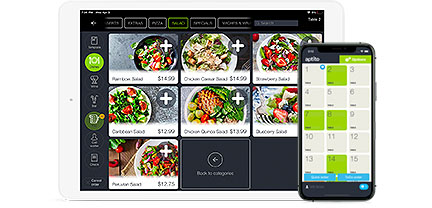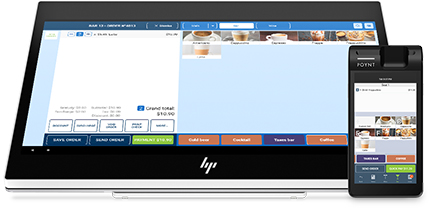The Darwinism of the Restaurant Menu: Digital Menus Have Arrived3 min read
 The digital menu has come a long way …
The digital menu has come a long way …
Long, long ago, in a land far, far away… mankind once relied upon a spoken menu. This was prior to written communications and could be found in ancient Egyptian civilizations and others that were like it which occurred during this time period of key human development and the expansion of civilization to what we know it today. Then, along came beer, and it changed everything. Suddenly, there was a need to start tracking the world’s new most favorite commodity. And viola: beer helped purvey the very first written records, accounting, and you guessed it: the first restaurant menu.
Albeit, these clay tablets were very primitive, and they featured engravings of certain kinds of beers, and really were mostly used as means of keeping anecdotal records, but they also comprise the dichotomy of the restaurant menu. Fast forward a few thousand years, and the menu evolved. Prior to humanity embracing paper menus, people grew accustomed to seeing the food they wanted to eat before they ordered it; i.e. food vendors and street merchants, taverns, pubs, etc.
According to historians, the world’s first official food service business, or restaurant, can be traced all the way back to year 1765. “In about 1765, a Parisian ‘bouillon seller’ named Boulanger wrote on his sign: ‘Boulanger sells restoratives fit for the gods’…This was the first restaurant in the modern sense of the term,” writes food historian, Clarkson Potter, in his book, Larousse Gastronomiqe.
Oddly enough, the first paper menus are thought to have originated from China during the Song Dynasty. It stemmed from an eclectic mixture of various cultures that had so many ethnic dishes to choose from that they ultimately started writing down their offerings on paper – which was abundant primarily in this region at the time – thus birthing the first paper restaurant menu.
Fast forward to around the middle of the 20th century, and menu design specialists started being hired to make restaurant menus look and feel more attractive and sell more food. Skip and hop to the present day, and the idoneous nature of menu design is seen at nearly every food service business you could even visit.
Enter the 21st century, and the digital menu is the latest breaking technological fascination.
Why digital menus? Because quite frankly, paper menus are about three thousand years outdated, they impact our carbon footprint, they are static, they are boring and they have to be tossed away, redesigned and reprinted every few months, or every time a menu item has been changed.
Digital menus, however, are quickly becoming the new staple. The next evolution of the digital menu will include applications to all sectors of the food service and hospitality industries. Patrons can now hold onto handheld tablets and place orders directly from the high definition screens, which feature detailed descriptions, prices, high resolution pictures and even a feedback submit feature.
Digital menus can be offered as iPad menus, and are cross platform compatible. Imbedded POS software tracks inventory, orders, profits and losses for managers, and enable a convenient, desirable and secure payment at table feature.
On the customer’s side, they can request a waiter by merely pressing a button. They can pay at the table and simply leave. They can order more drinks. Share their meal experience via imbedded social media feeds, and even tell the management how their dining experience was.
The future, however, has already arrived. It is here right now. Learn more about Open Digital Menus and our signature, patent pending All-in-One solution.



